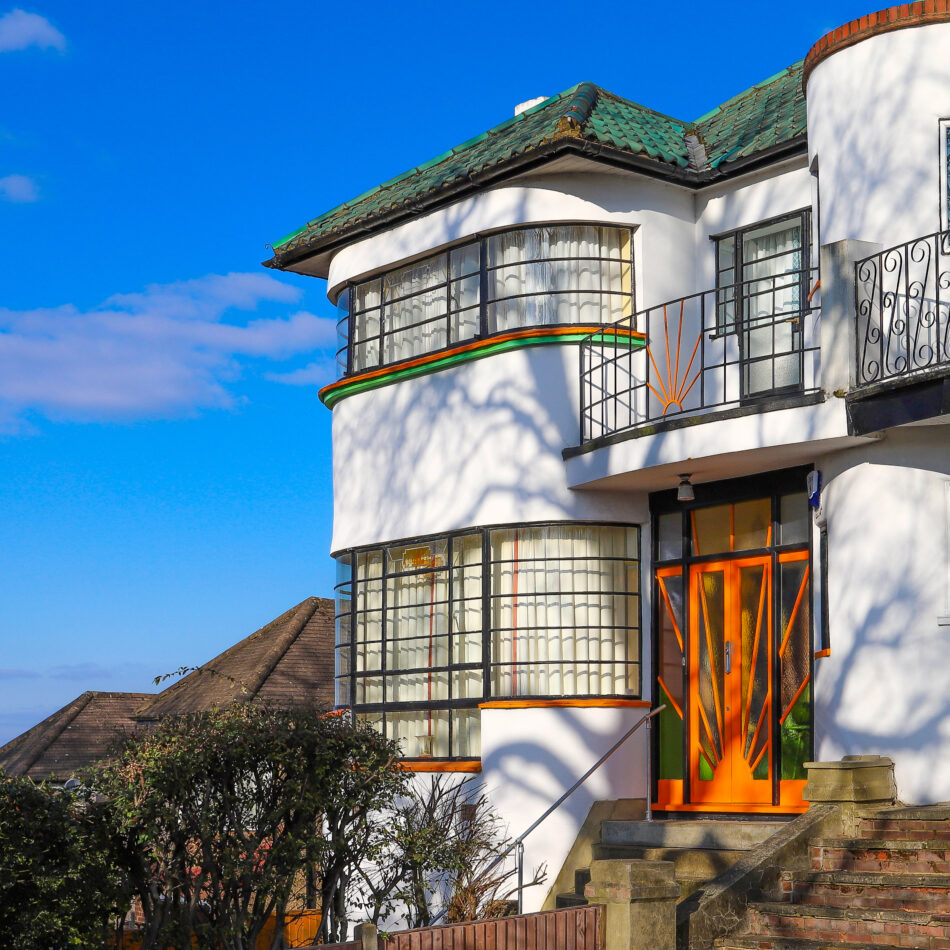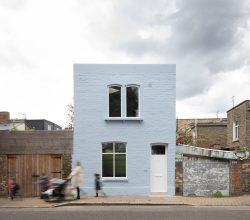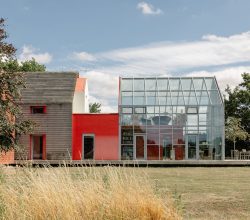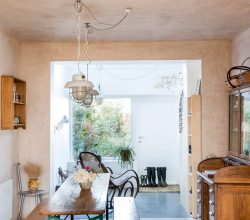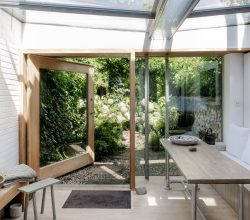Book Preview: Celebrating the Architectural Wonderland of London’s Suburbia
I ❤️ Suburbia is the first book by Simon Pollock, based on his successful Instagram account, @londonsuburbia. The book celebrates the lives of people living on the outskirts of London and explores some of the often-overlooked architectural treasures of the ‘burbs, from houses to abandoned factories, from schools to cinemas. Simon started exploring London’s suburbs in 2022 and is still walking its tree-lined streets, looking for hidden gems and little-known history. We asked him to share some of his discoveries:
Words and photography Simon Pollock
As a lifelong suburbanite I’ve always been rather dismissive of the sprawling streets of semi-detached houses that form a band around London. Sure, there were a few memorable buildings nestled in amongst the apparent homogeny that I’d noticed on my travels, but, overall, the suburbs all looked the same, right? Then again, thinking about those noticeable buildings, how on earth did they get there? Who built them, and what happened in them? I thought I should venture out to the streets of Pinner, Surbiton, Bromley and beyond and do some exploring.
One of the first thing I noticed was that no two houses looked the same, especially the pairs of semis. Built as carbon copies of each other, decades of different owners brought incremental changes. Some houses had window frames made of wood, some were plastic, others were metal. There were mismatched loft extensions, concrete driveways next to flower gardens, exotic palm trees competing with silver birch. There were clues to the personalities and tastes of past and present residents in the outward appearance of almost every house. Everything had been customised; everything was different.
Once I started to look around properly, it quickly became apparent that the suburbs are an architectural wonderland. The creation of the greater part of London’s suburbs in the 1930s had coincided with the inter-war modernist architectural movement, bringing for the first time more ‘avant-garde’ designs to Britain – buildings designed with a mix of clean lines, geometric symmetry and elegant simplicity. These ultramodern art deco buildings were scattered amongst the mock Tudor and faux country cottages in the form of beautiful boxy houses. But of course, where there were houses and people, there was a need for all the other buildings that we need in our community: schools, doctors’ surgeries, cinemas, workplaces, stations and many more, and so many of these amazing places are still with us, hiding in plain sight. Here are a few highlights from the pages of I ❤️ Suburbia …
(1) Pioneering in Purley
This house in Purley is one of the first examples of a modernist house in the UK. It was built in 1926 by George Cushing, a surveyor from Croydon, only one year after what we now tend to call art deco was showcased as ‘style moderne’ at the Exposition Internationale des Arts Décoratifs et Industriels Modernes in Paris – a huge exhibition, sponsored by the French government, that presented the most up-to-date styles from around the world.
And if the name George Cushing sounds a little familiar, he was the father of Peter Cushing, who became famous for his roles in the Hammer House of Horror films and of course played the commander of the Death Star, Grand Moff Tarkin, in Star Wars: this was his childhood home and there’s a blue plaque on the house to celebrate the great man himself. The force is strong with this house.
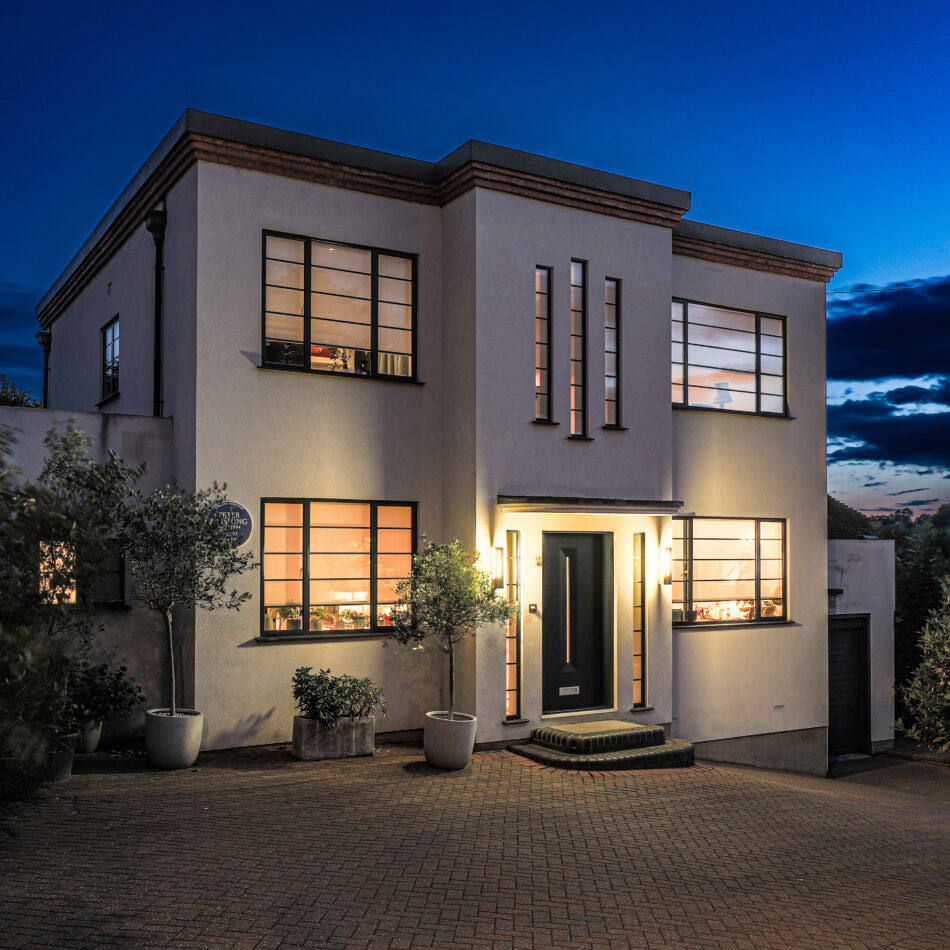
(2) The dawn of the Sunspan house
In 1934, the Daily Mail’s annual Ideal Home Exhibition decided to encourage mainstream house builders of the day to build more futuristic homes. So, in the National Hall of Olympia, the exhibition showcased several full-sized show homes: flat-roofed modernist houses with all the latest mod cons built into the fabric of the house. Prospective purchasers were encouraged to place orders for these homes, which would then be built in the new suburbs.
Unfortunately, most people didn’t trust the combination of the British weather and a flat roof (which were notorious for leaks), so only a handful of the Ideal Home Exhibition houses were ever sold and built in the real world, along with a few other speculative designs from developers and architects. They were nearly all built in 1935 and are true gems within London’s suburbs. Sunspan houses like this one in Kingston Vale were one of the designs showcased at Olympia. Designed by Wells Coates, they were marketed as “the home of the future”, and the idea was to let as much sun into the home as possible. Instead of the front elevation facing the road, with the rear in the garden, the building was rotated 45 degrees and built in a diamond shape. This simple but radical idea meant that the rear corner of the building always faced due south and featured wrap-around windows that let the light in from dawn to dusk. About 15 were eventually built, and of the 10 or so that I’ve seen, all are aligned in this way, with a south-facing garden.
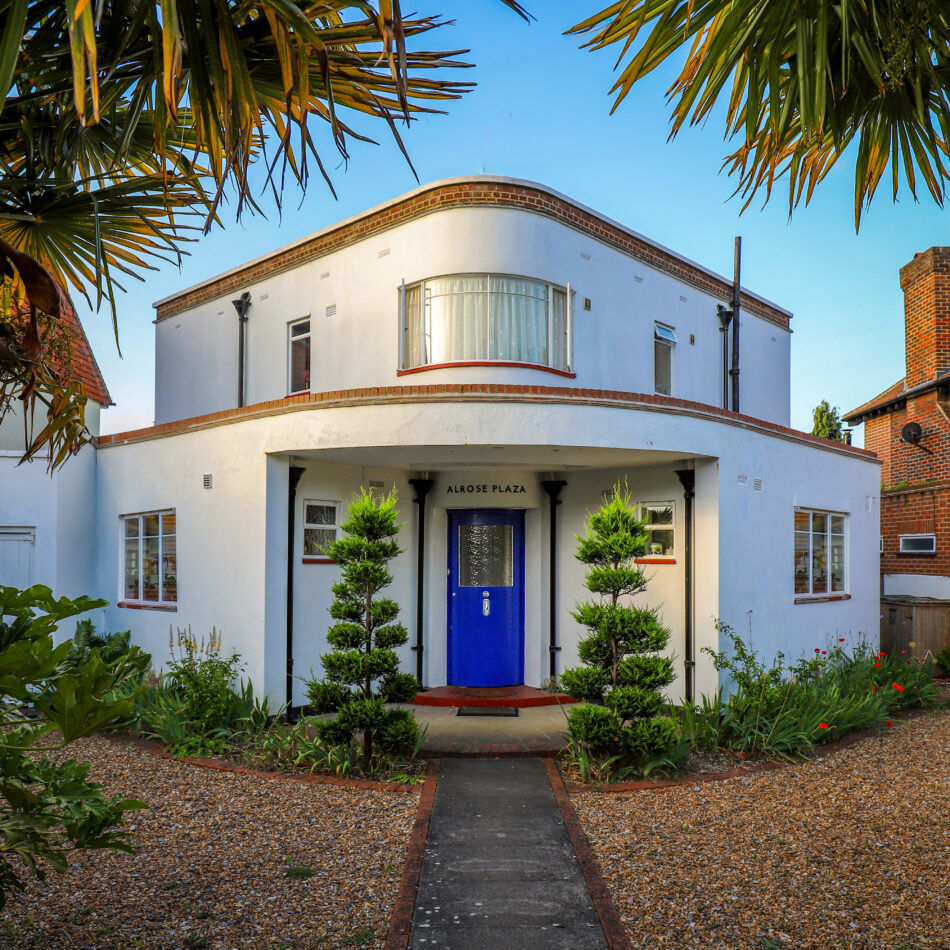
(3) Adapted for dance
Another lovely building originally showcased in the National Hall of the Ideal Home Exhibition in 1934 was simply named ‘House No. 9’. It was offered for sale or order by Morrell (Builders) Ltd and was designed by the architects Leslie H. Kemp and Frederick E. Tasker.
These houses featured maple wood flooring throughout, and glazed double doors separating the rooms on the ground floor could be opened to make one single room that was 40-ft long; “an excellent feature when holding an impromptu dance,” a brochure claimed.
This particular one is in West Wickham and is currently in use as a temporary library. I believe that impromptu dancing is no longer permitted as a result.
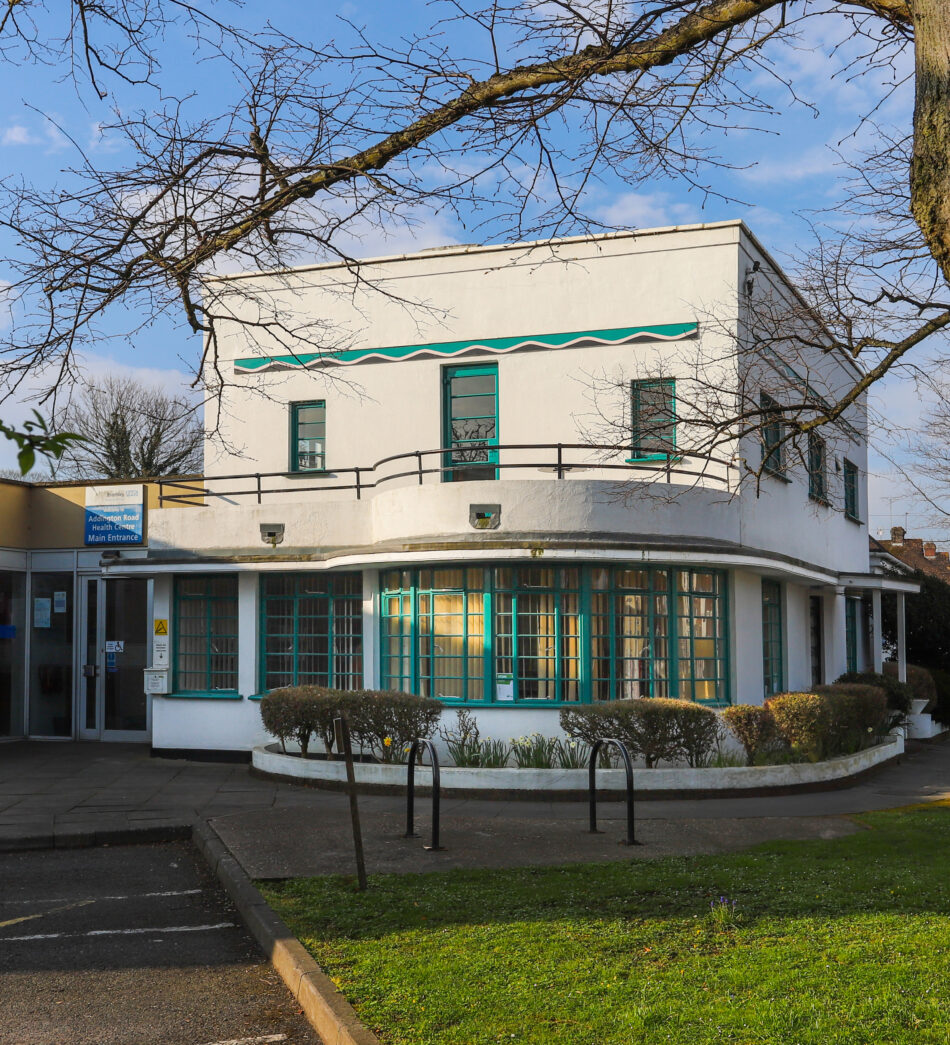
(4) Seventies throwback
Of course, as well as the mass-market builders putting up modernist houses all over London, smaller independent architects were trying their hands at the new styles of the 1930s. This stunning house sits just around the corner from Malden Manor Station in south-west London, and is believed to have been designed by Barnes-based architect L. Norman Holt in 1935. It’s currently owned by two sisters, Luciana and Silvana, and is special to them as it was their childhood home. It has been in their family for over 50 years, having been bought in 1972 – in fact, their parents fell in love with the house so much they put in an offer without even viewing the inside.
Little of this place has changed since then. To give you an idea, all the original inner walls are in place, there is different dark wood flooring on each of the three floors and it even has all its original doors and a tiny 1930s garage.
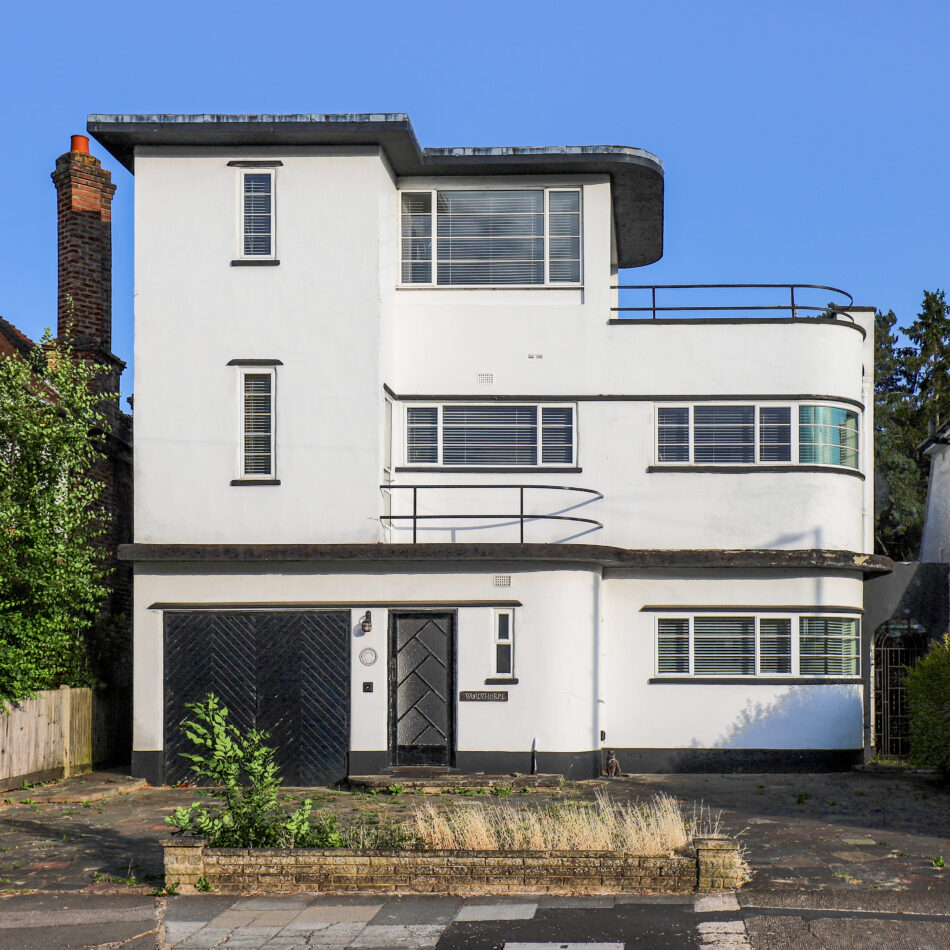
(5) A cubist masterpiece by Couch & Coupland
As well as small independent architects ‘going modernist’, some of the bigger, more established, high-end firms like Couch & Coupland were building bespoke houses such as this cubist masterpiece from 1935 in Twickenham. It is currently owned by Marcus, an author, public speaker and force of nature, who inherited the house from his parents after they passed away in 2018.
Marcus is as much a suburban gem as the house, and while he lives in the property, he also gives public-speaking lessons there, as well as opening its doors to authors, librarians and educators with the aim of promoting literacy. What’s more, since he’s moved back in, Marcus has renovated the place, removing the rotten wooden structure of the home and installing a huge sprung dance floor, a library, a teaching bunker in the garden and even a zip wire in the back.
Marcus and his house really sum up suburbia for me: you might know what to expect of a particular area, but turn the corner and there’s a house like this waiting for you with an extraordinary person living inside.
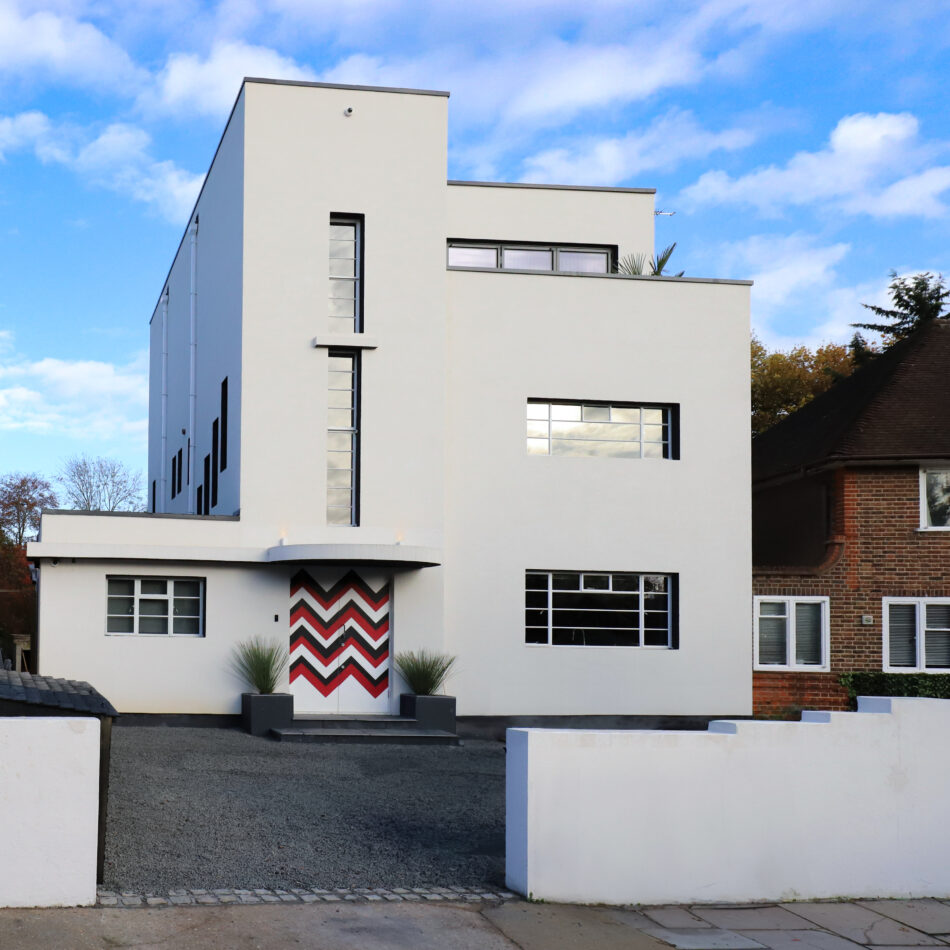
(6) Howard’s end
And finally, proof that a fairly typical suburban home can look spectacular when the right person owns it. Meet Howard’s house in Chingford Mount. Howard bought it in 1983, when it was in a terrible state. The fabric of the house was crumbling and inside, the walls were clad in Formica with polystyrene tiles adorning the ceilings. Due to the state of it, Howard picked it up for £20,000 less than the neighbouring house had gone for and set about repairing it.
As the plastic came off the walls and ceilings, the long-hidden art deco features of the house started to become apparent. Back in the 1980s, art deco was not particularly fashionable, but Howard rather liked it and so began a 40-year journey of restoring the place to its former glory. He’s done an amazing job, and the house is full of original features and 1930s collectables.
